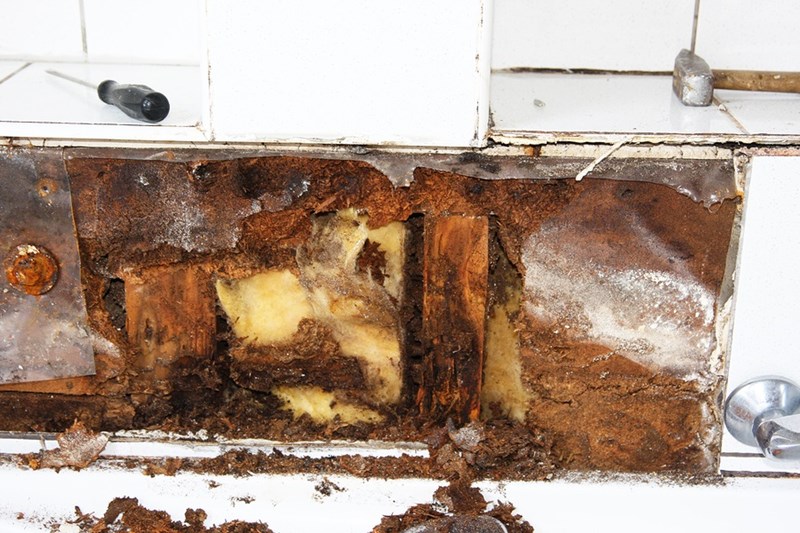The content in the next paragraphs involving Common Causes of Water Damage in a Bathroom is relatively interesting. You should keep reading.

The bathroom is extremely prone for wet accumulation and prospective water damages as a result of the frequent use of water in it. This post uses straightforward examination techniques to help spotting water damage risks.
The regular use water in the shower room makes it exceptionally prone for wet build-up as well as prospective water damages. By evaluating it routinely, you can decrease water associated problems.
The adhering to collection of examinations is easy to carry out as well as must be done when in every 3 months in order to maintain your washroom healthy and to prevent potential water damages caused by the tub, the shower, pipe joints as well as plumbing, sinks, cupboards, as well as the bathroom
Do not disregard carrying out these evaluations and be comprehensive while performing them. Keep in mind that these easy evaluations can save you a lot of money by offering early signs for water damages
Tub and Shower
The shower and bath tub call for special attention and upkeep. Inspect the ceramic tiles and replace if broken. Ensure that there is no missing out on cement in between the ceramic tiles. Examine and replace cracked caulking at joints where the wall surfaces fulfill the flooring or the tub. Clogged drains and also pipelines issues will prevent the bathtub from drying out and may show severe issues below the bathtub. Seek advice from a specialist right away to prevent architectural damages. Take note of stainings or soft locations around the tub walls as they might suggest an internal leak.
Plumbing
Signs for water damages are difficult to spot since the majority of pipes are installed inside the wall surfaces.
Pay special attention to floor covering as well as walls dampness as well as stains as they might suggest an unnoticeable plumbing problem. Check dampness levels in adjacent spaces as well.
Sinks and also Cabinets
Sinks as well as closets are exposed to dampness and moisture daily and also are often ignored. Inspect on a regular basis under the sink and on the counter top over it. Repair any kind of drip in the catch as it may recommend drain issues. Look around the sink, sluggish draining pipes might indicate an obstructed drainpipe. Replace sink seals if they are fractured or loose.
The Commode
The bathroom is an at risk water junction. Examine the water lines and look for leaks around the bathroom seat, in the tube, as well as under the water container. If you identify any indicators of moisture on the flooring around the commode, check for leakages in the toilet edge as well as storage tank seals.
Realize that hanging toilet dish deodorants enhances the opportunities for clogs.
Water Damage Signs In The Bathroom To Avoid Cleanup
Musty smell
This is one of the easiest signs to catch because musty smells are so odorous. The damp, earthy, moldy smell should be a big red flag. The smell will develop when moisture gets trapped in surfaces, and begins to facilitate mold growth. Leaking pipes under cabinets, inside walls, and behind shower fixtures will cause moisture to stay trapped and not dry, which will lead to mold growth and spread. As soon as you notice any musty smells in your bathroom, have it checked for hidden water damage and cleanup signs.
Visible mold
If the smell isn’t there to give it away, sometimes you will actually see mold growth. Finding mold in your bathroom is a serious problem, because mold is very harmful to your health. By the time mold growth is visible, it also means that water damage has already occurred and been present for some time. The only way the mold problem can be resolved is to find the source of the moisture and get it stopped. To safely and adequately remove mold, you need to have professionals handle the remediation. Do not waste any time in getting mold problems addressed, fixed, and sanitized so that you can protect you and your family from the many respiratory symptoms caused by mold exposure.
Damaged floors
Bathroom floors should be able to withstand some exposure to water while still remaining in good condition. However, when excess exposure or water leaks occur, they will begin to damage even the most water-resistant flooring. If you notice any cracking, bubbling, staining, or warping on your bathroom floors, there is probably a water leak somewhere causing the distortion. If you notice areas of the floor have become softer, or even have a spongy feeling, there is probably damage to the subfloor. Subflooring is typically made up of plywood. When plywood is exposed to water or moisture, it will absorb it. Once it has become saturated, the weight of the excess water will cause the wood to swell and soften. Check the floors in your bathroom frequently to catch any of these sings before they lead to damaged subflooring.
Changes on walls
When water leaks behind walls, it will cause changes in the drywall. Peeling plaster, blistering paint, and soggy wallpaper are all good indicators that excess water is building up behind the wall. Water leaking behind drywall will cause it to swell and be soft to the tough. If you start to notice gaps along the trim of your walls, or where tile meets the wall, it could also be a strong indicator that there is a leak behind the wall. Any changes, distortion, or damage on the walls should be evaluated as soon as you notice it to prevent further water damage and cleanup.

I have been very inquisitive about How to Repair and Prevent Bathroom Water Damage and I'm hoping you liked the post. Are you aware of anybody else who is fascinated with the topic? Feel free to share it. Thank-you for going through it.
Free Estimate
Comments on “Just How to Help Prevent Water Damage in Your Bathroom”